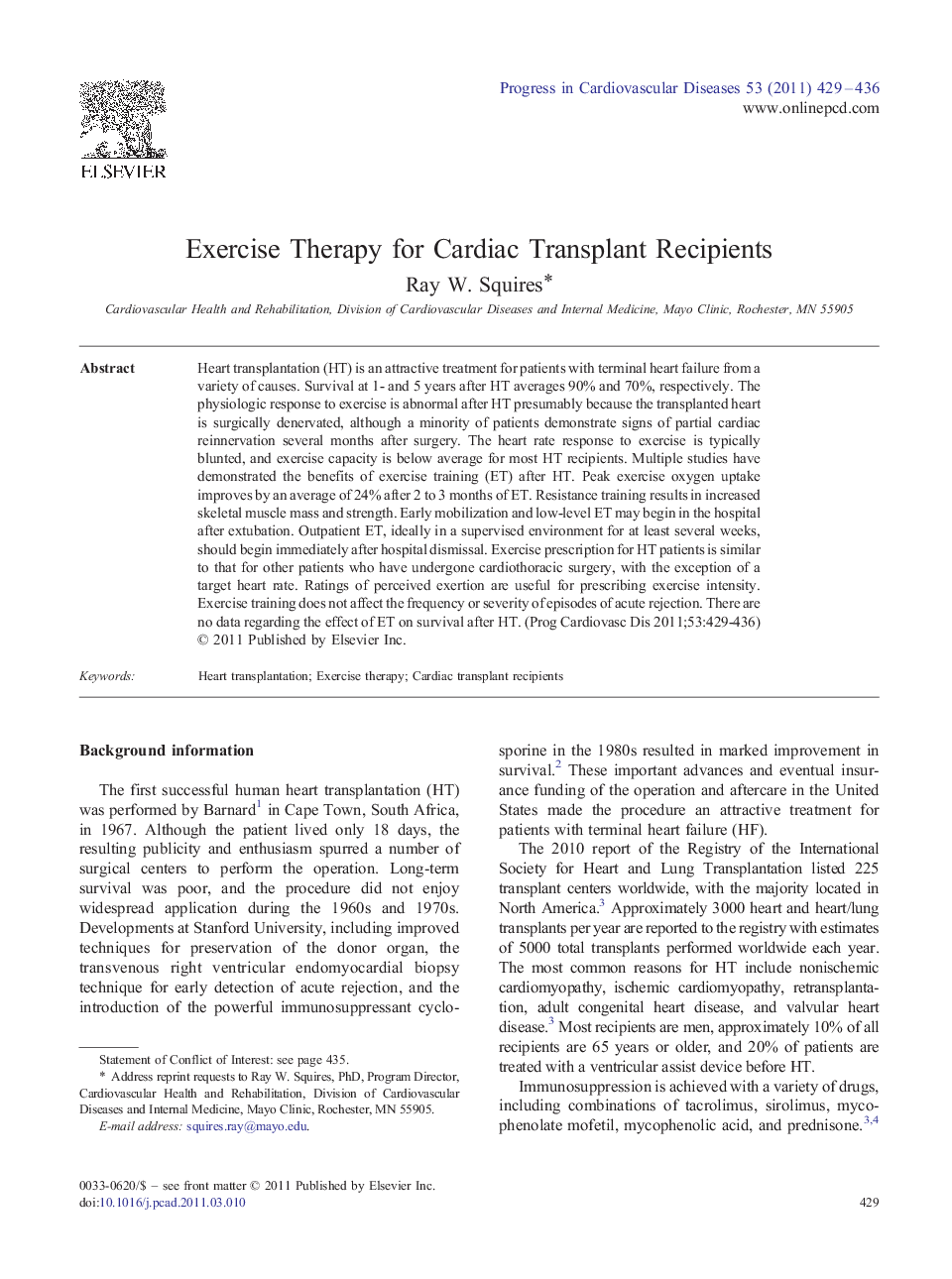| Article ID | Journal | Published Year | Pages | File Type |
|---|---|---|---|---|
| 3006515 | Progress in Cardiovascular Diseases | 2011 | 8 Pages |
Heart transplantation (HT) is an attractive treatment for patients with terminal heart failure from a variety of causes. Survival at 1- and 5 years after HT averages 90% and 70%, respectively. The physiologic response to exercise is abnormal after HT presumably because the transplanted heart is surgically denervated, although a minority of patients demonstrate signs of partial cardiac reinnervation several months after surgery. The heart rate response to exercise is typically blunted, and exercise capacity is below average for most HT recipients. Multiple studies have demonstrated the benefits of exercise training (ET) after HT. Peak exercise oxygen uptake improves by an average of 24% after 2 to 3 months of ET. Resistance training results in increased skeletal muscle mass and strength. Early mobilization and low-level ET may begin in the hospital after extubation. Outpatient ET, ideally in a supervised environment for at least several weeks, should begin immediately after hospital dismissal. Exercise prescription for HT patients is similar to that for other patients who have undergone cardiothoracic surgery, with the exception of a target heart rate. Ratings of perceived exertion are useful for prescribing exercise intensity. Exercise training does not affect the frequency or severity of episodes of acute rejection. There are no data regarding the effect of ET on survival after HT.
